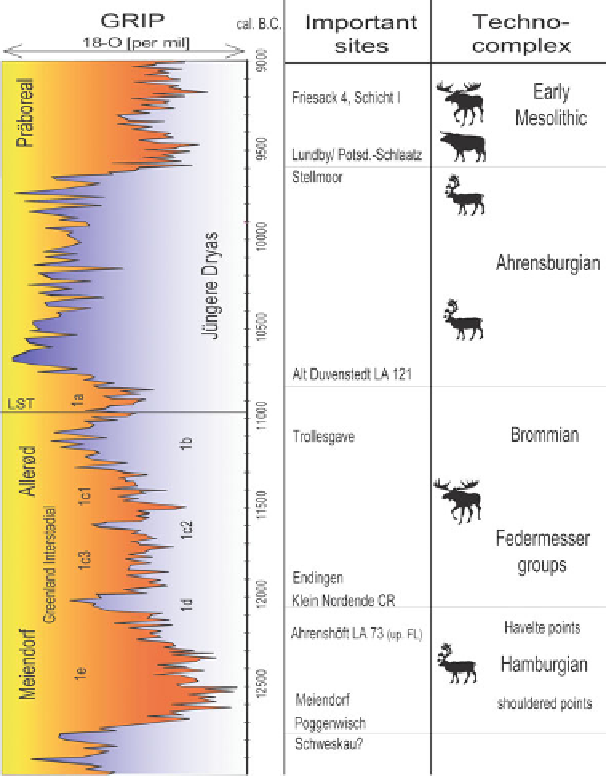Geoscience Reference
In-Depth Information
Fig. 15.3
Chronostratigraphical sequence of the Late Glacial in relation to isotope curve of
the GRIP ice core (LST: Laacher See Tephra), archaeologically defined groups and cultures
of Northern Germany/Southern Scandinavia, important sites and typical faunal elements (after
Terberber 2006a, fig. 6)
rose to more than 25 m above the seawater level (Fig.
15.4
). While the shoreline
of the south-western part of the Baltic Ice Lake was still far to the north and east
of the present shore, large parts of what are now the territories of the Baltic States
were under water (Zagorska
1999
). Only during a short period, between 10,200
and 9,700 cal. BC, a rapid regression of the level of the Baltic Ice Lake has been
recorded, when the Baltic waters could flow out into the North Sea via a strait run-
ning through what is today central Sweden. But this strait closed again during the
Younger Dryas period and the level of the Baltic Ice Lake again rose rapidly, causing

